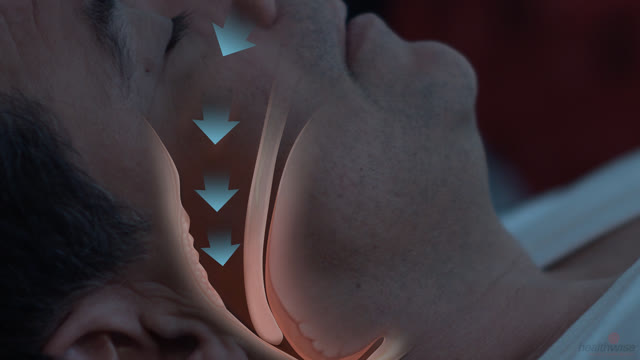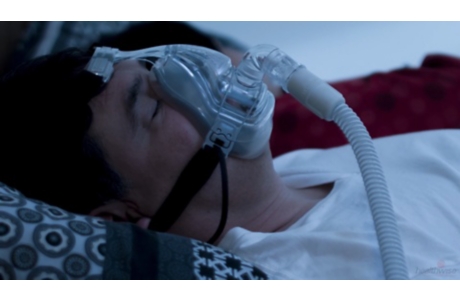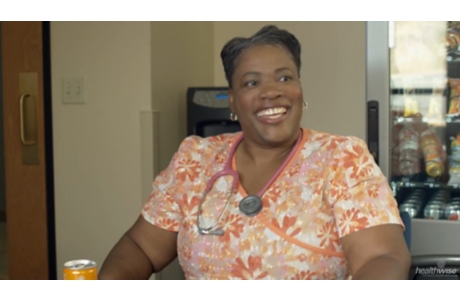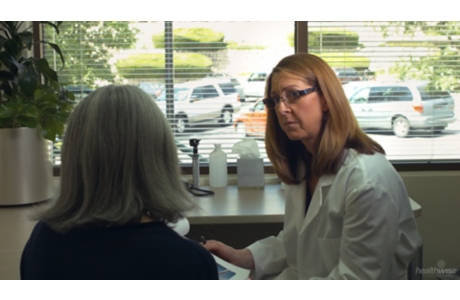Uvulopalatopharyngoplasty for Obstructive Sleep Apnea
Surgery Overview
Uvulopalatopharyngoplasty (UPPP) is a procedure that removes excess tissue in the throat to make the airway wider. This sometimes can allow air to move through the throat more easily when you breathe, reducing the severity of obstructive sleep apnea (OSA). The tissues that are removed may include:
- The soft finger-shaped tissue that hangs down from the back of the roof of the mouth into the throat (uvula).
- Part of the roof of the mouth (soft palate).
- Excess throat tissue, tonsils, and adenoids.
If an enlarged tongue is a factor in your sleep apnea, the surgeon may remove a small part of the tongue. This is called an uvulopalatopharyngoglossoplasty.
What To Expect
You may need continuous positive airway pressure therapy (CPAP) therapy after surgery. CPAP therapy uses a breathing device that you wear at night that helps you breathe more easily and prevents your airway from closing during sleep.
Some pain medicines can relax the throat muscles. You may have to avoid these medicines after surgery to make it less likely that your airways will narrow and cause apnea episodes.
Why It Is Done
Your doctor may suggest UPPP if you:
- Have excess tissue in your nose, mouth, or throat that blocks your airway.
- Choose not to use (or cannot use) CPAP.
- Do not get better after using CPAP.
- Do not want to have an opening made in your windpipe (tracheostomy) to treat sleep apnea.
Children usually do not have UPPP. For them, removing the tonsils and adenoids usually cures sleep apnea.
How Well It Works
UPPP may reduce sleep apnea in some people, but results are mixed.footnote 1, footnote 2
UPPP may stop snoring, but apnea episodes may continue.
Even if surgery successfully removes the blockage, you may still need CPAP after surgery.
Risks
Complications during surgery include accidental damage to surrounding blood vessels or tissues.
Complications after surgery may include:
- Problems swallowing.
- Speech problems. The surgery may result in a nasal quality to the voice.
- Changes in how food tastes.
- Swelling, pain, infection, or bleeding.
- Narrowing of the airway in the nose and throat.
- Sleepiness and periods of not breathing (apnea) related to the medicines that are used to relieve pain and help you sleep.
What To Think About
Before considering surgery, you should try CPAP.
You will need a sleep study after UPPP surgery to find out if your sleep apnea has improved. If you still stop breathing at night, you may still need CPAP.
Laser-assisted uvulopalatoplasty is sometimes used to treat mild to moderate obstructive sleep apnea, although not all people benefit. This procedure is not recommended by the American Academy of Sleep Medicine to treat sleep apnea.footnote 3
People who are obese or who have some other illnesses are more likely to have complications after UPPP.footnote 4
References
Citations
- Sundaram S, et al. (2005). Surgery for obstructive sleep apnoea in adults. Cochrane Database of Systematic Reviews (4).
- Caples SM, et al. (2010). Surgical modifications of the upper airway for obstructive sleep apnea in adults: A systematic review and meta-analysis. Sleep, 33(10): 1396–1407.
- Aurora RN, et al. (2010). Practice parameters for the surgical modifications of the upper airway for obstructive sleep apnea in adults. Sleep, 33(10): 1408–1413.
- Kezirian EJ, et al. (2006). Risk factors for serious complication after uvulopalatopharyngoplasty. Archives of Otolaryngology—Head and Neck Surgery, 132(10): 1091–1098.
Credits
Current as of: June 9, 2019
Author: Healthwise Staff
Medical Review:Anne C. Poinier, MD – Internal Medicine & Adam Husney, MD – Family Medicine & Hasmeena Kathuria, MD – Pulmonology, Critical Care Medicine, Sleep Medicine
Current as of: June 9, 2019
Author: Healthwise Staff
Medical Review:Anne C. Poinier, MD – Internal Medicine & Adam Husney, MD – Family Medicine & Hasmeena Kathuria, MD – Pulmonology, Critical Care Medicine, Sleep Medicine
This information does not replace the advice of a doctor. Healthwise, Incorporated, disclaims any warranty or liability for your use of this information. Your use of this information means that you agree to the Terms of Use. Learn how we develop our content.








